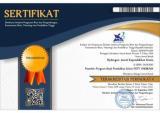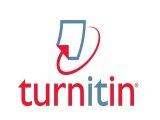Efisiensi Adsorpsi Metilen Biru Menggunakan Karbon Baggase Teraktivasi
Abstract
Lombok Island has a distinctive culture and produces handicraft products with cultural motifs such as traditional woven fabrics of the Sasak tribe. Dyeing of woven fabrics using natural and artificial dyes. For artificial dyes, one of which is methylene blue dye. Residual water or former dyeing in coloring is usually immediately discharged into the environment which causes pollution or hazardous waste for living things. The presence of dyes greatly affects the environment because of their high toxic effects, can cause allergies and skin irritation, and can cause gene changes and are carcinogenic. Based on these problems, processing is needed to reduce the pollutant substances that are generated. One of the technologies used is adsorption using a natural adsorbent that is efficient and easy to obtain, namely activated carbon baggase (bagasse). Bagasse carbon made through the pyrolysis stage (carbonation process) at a certain temperature can be used as an alternative adsorbent for the adsorption of pollutant dyes. This study aims to determine the characteristics and adsorption efficiency of methylene blue by activated carbon baggase. This study used experimental methods with gravimetric techniques, batch techniques, and samples were analyzed using Uv-Vis Spectrophotometry. A 10 mL sample of 10 ppm methylene blue was contacted with one gram of activated carbon baggase. The research was conducted in six stages. The first stage is to prepare activated carbon baggase adsorbents. The second, third, and fourth stages are optimization of the methylene blue solution. The fifth to the sixth stage is the measurement of methylene blue adsorption on activated carbon baggase adsorbents with variations in pH and contact time. Characteristics of activated carbon baggase in this study obtained a moisture content of 4.64% and an ash content of 5.37%. The optimum pH was obtained at pH 5 with an adsorption efficiency of 86.4%, while the optimum contact time was obtained at 80 minutes with an adsorption efficiency of 86.9%. From these results it can be concluded that the activated carbon baggase adsorbent is effective in adsorbing methylene blue so that it can be used to overcome pollution problems caused by dye waste.
Full Text:
PDFDOI: https://doi.org/10.33394/hjkk.v10i2.6410
Refbacks
- There are currently no refbacks.

This work is licensed under a Creative Commons Attribution-ShareAlike 4.0 International License.





